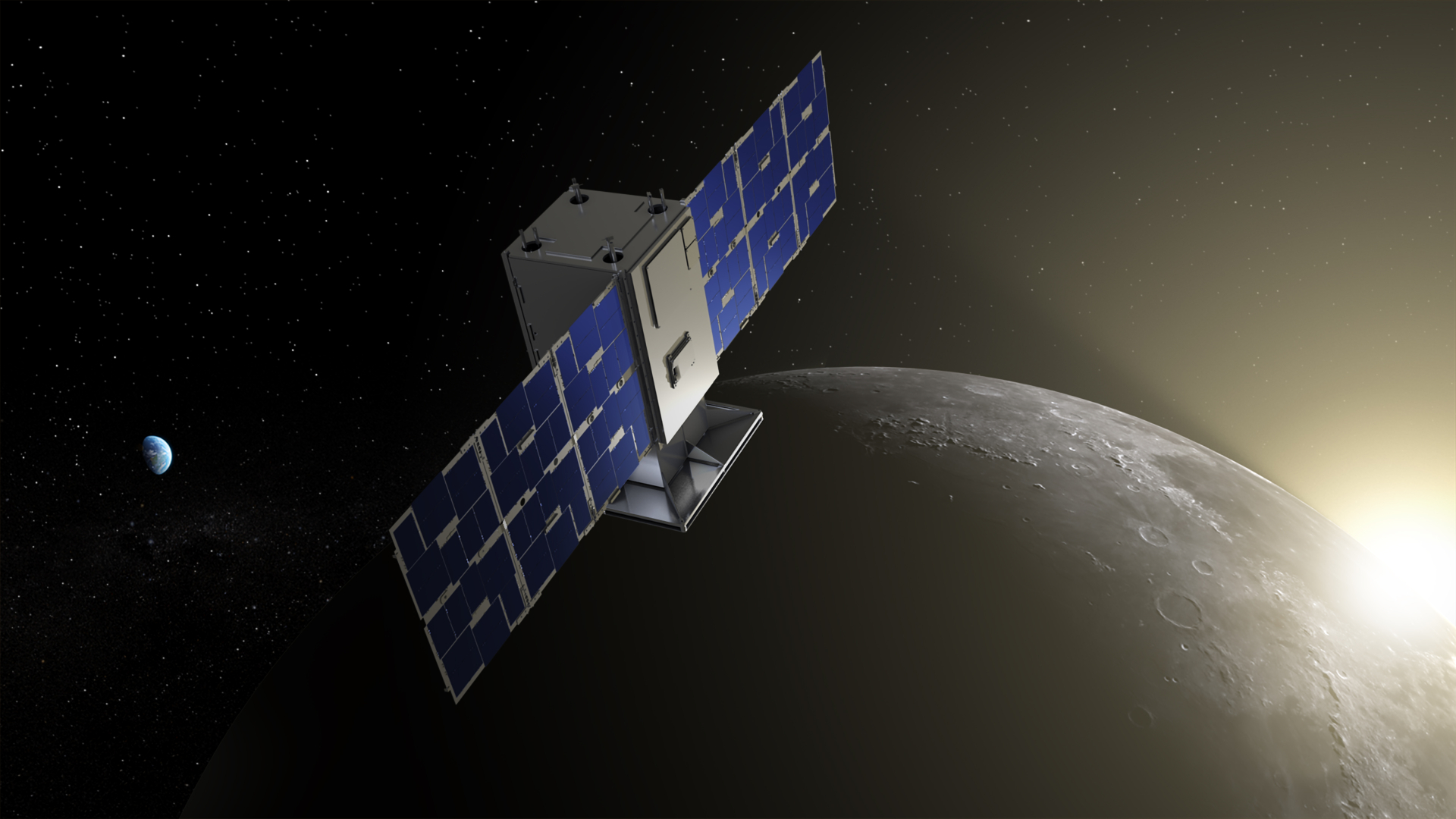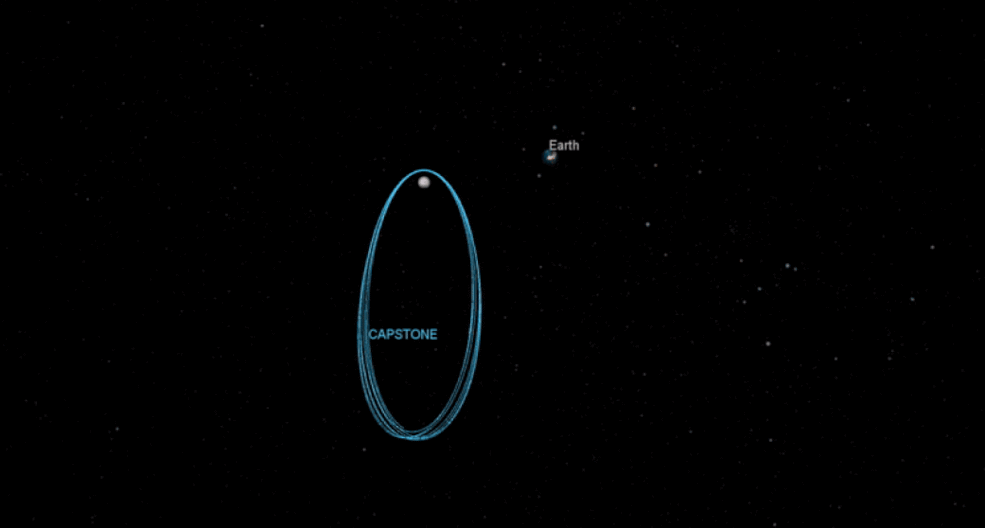
This little spacecraft has a big journey ahead of it.
NASA's 55-pound (25 kilograms) CAPSTONE cubesat launched today (June 28), rising into the sky from New Zealand atop a Rocket Lab Electron booster. CAPSTONE is bound for the moon, but it won't get there until Nov. 13.
The moon is just 238,900 miles (384,500 kilometers) from Earth, a mere stone's throw on the scale of our solar system. NASA's crewed Apollo missions made the trip in just three days. So why will it take CAPSTONE more than four months?
Related: NASA's CAPSTONE moon mission to go where no cubesat has gone before
It's all about the rockets. The Apollo spacecraft launched atop NASA's enormous Saturn V, the most powerful rocket ever to fly (though the agency's Space Launch System megarocket and SpaceX's Starship vehicle could soon change that). The microwave-oven-sized CAPSTONE, by contrast, lifted off on Electron, a 59-foot-tall (18 meters) launcher designed to give small satellites rides to Earth orbit.
The CAPSTONE team therefore had to get creative, choosing a much more fuel-efficient route to Earth's nearest neighbor. That route — known as a ballistic lunar transfer trajectory (BLT) — turned out to be quite circuitous and time-consuming.
"BLTs are a type of low-energy transfer in which a spacecraft launches 1-2 million kilometers [600,000 to 1.2 million miles] away from the Earth (where the sun's gravity perturbation becomes dominant), then returns to Earth with a larger radius of perigee than before and a different geocentric orbit plane," representatives of the Colorado company Advanced Space, which is operating the CAPSTONE mission under a NASA contract, wrote in a description of the trajectory. (Perigee refers to the closest approach of a satellite to Earth during its orbit.)
Get the Space.com Newsletter
Breaking space news, the latest updates on rocket launches, skywatching events and more!
"When designed with the proper geometry, it is possible to choose the perigee to coincide with the moon's orbit, bringing the spacecraft into the vicinity of the moon," they added.
CAPSTONE's BLT will take it 810,000 miles (1.3 million km) from our planet before the cubesat is pulled back toward the Earth-moon system, Rocket Lab representatives wrote in the mission's press kit, which you can find here. The spacecraft will then slip into its desired orbit around the moon on Nov. 13.
There are a lot of boxes to check along the way, however. CAPSTONE is still in Earth orbit, attached to Rocket Lab's Photon spacecraft bus. Photon will perform a number of orbit-raising engine burns over the next five days, pushing CAPSTONE farther and farther away from our planet. On day six after liftoff, Photon will conduct one final burn, boosting the duo's velocity to 24,500 mph (39,500 kph) — fast enough to send CAPSTONE on its way to the moon.
Photon will deploy CAPSTONE within 20 minutes of that final burn, Rocket Lab representatives wrote in the press kit. The cubesat will then make its own slow and steady way to the moon — the BLT path — via another series of engine firings.

CAPSTONE (short for "Cislunar Autonomous Positioning System Technology Operations and Navigation Experiment") is headed for a near rectilinear halo orbit (NRHO) around the moon. This highly elliptical path will take the cubesat within 1,000 miles (1,600 km) of one lunar pole on its closest pass and 43,500 miles (70,000 km) from the other pole at its most distant point.
Researchers think this lunar NRHO is quite stable, allowing a spacecraft to remain in it without consuming much fuel. Indeed, this presumed stability is one of the main reasons NASA chose this orbit for Gateway, the small space station that's a key part of the agency's Artemis program of lunar exploration.
No spacecraft has ever occupied a lunar NRHO before, however, and NASA wants to verify its stability — and that's CAPSTONE's main mission goal. The cubesat will spend at least six months in the NRHO, allowing researchers to characterize it in detail.
CAPSTONE will also conduct some navigation tests and spacecraft-to-spacecraft communication trials, the latter in concert with NASA's Lunar Reconnaissance Orbiter (LRO), CAPSTONE team members have said. LRO orbits the moon on a more traditional path.
Mike Wall is the author of "Out There" (Grand Central Publishing, 2018; illustrated by Karl Tate), a book about the search for alien life. Follow him on Twitter @michaeldwall. Follow us on Twitter @Spacedotcom or on Facebook.
Join our Space Forums to keep talking space on the latest missions, night sky and more! And if you have a news tip, correction or comment, let us know at: community@space.com.

Michael Wall is a Senior Space Writer with Space.com and joined the team in 2010. He primarily covers exoplanets, spaceflight and military space, but has been known to dabble in the space art beat. His book about the search for alien life, "Out There," was published on Nov. 13, 2018. Before becoming a science writer, Michael worked as a herpetologist and wildlife biologist. He has a Ph.D. in evolutionary biology from the University of Sydney, Australia, a bachelor's degree from the University of Arizona, and a graduate certificate in science writing from the University of California, Santa Cruz. To find out what his latest project is, you can follow Michael on Twitter.









